Antec Overture II
Antec is no stranger to case design, and with the Overture II, it shows. More reminiscent of an actual computer, this case also has a good feel to it in regards to its dimensions, but unlike the Mstation, it doesn’t look like it’d fit quite as well with other electronic equipment in one’s livingroom.
The majority of the case is finished in piano-black, glossy coated steel, but the front panel is primarily in shades of silver and chrome. Sporting two of each size of external drive, the Overture II has a lot more potential for a full-fledged system than the Mstation, but the 3R case did come with built-in flash memory card readers, while this case does not.
Something that we couldn’t be happier about though is the fact that Antec chose to space out the USB and Firewire ports enough for larger devices to be plugged in simultaneously. This is a common mistake in the case world, so it’s nice to see someone finally getting it right.
A large portion of the case’s intake air can come right in through the front panel, through the holes along the top and bottom edges of the front bezel. In this close-up shot here, we can see not only these holes in great detail, but also the embossed Antec logo.
Extra venting holes in the top cover are visible in this angled shot of the back of the case, as well as vents for the main exhaust fans on the back and left sides of the case. Notice that, overall, the Overture is just a little slimmer than the Mstation.
Taking a look at the underside of the Antec case, we get an idea of why this case has its own custom power supply included. The large 120mm fan should definitely help the beefy 450 watt power supply stay nice and cool without making too much noise if running at lower speeds.
Our last look around the external of the Overture II takes us to the left side again where we see one more feature of some sort.
Antec is no stranger to case design, and with the Overture II, it shows. More reminiscent of an actual computer, this case also has a good feel to it in regards to its dimensions, but unlike the Mstation, it doesn’t look like it’d fit quite as well with other electronic equipment in one’s livingroom.
The majority of the case is finished in piano-black, glossy coated steel, but the front panel is primarily in shades of silver and chrome. Sporting two of each size of external drive, the Overture II has a lot more potential for a full-fledged system than the Mstation, but the 3R case did come with built-in flash memory card readers, while this case does not.
Something that we couldn’t be happier about though is the fact that Antec chose to space out the USB and Firewire ports enough for larger devices to be plugged in simultaneously. This is a common mistake in the case world, so it’s nice to see someone finally getting it right.
A large portion of the case’s intake air can come right in through the front panel, through the holes along the top and bottom edges of the front bezel. In this close-up shot here, we can see not only these holes in great detail, but also the embossed Antec logo.
Extra venting holes in the top cover are visible in this angled shot of the back of the case, as well as vents for the main exhaust fans on the back and left sides of the case. Notice that, overall, the Overture is just a little slimmer than the Mstation.
Taking a look at the underside of the Antec case, we get an idea of why this case has its own custom power supply included. The large 120mm fan should definitely help the beefy 450 watt power supply stay nice and cool without making too much noise if running at lower speeds.
Our last look around the external of the Overture II takes us to the left side again where we see one more feature of some sort.
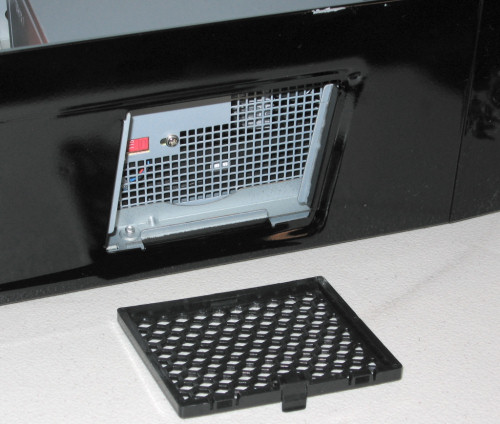


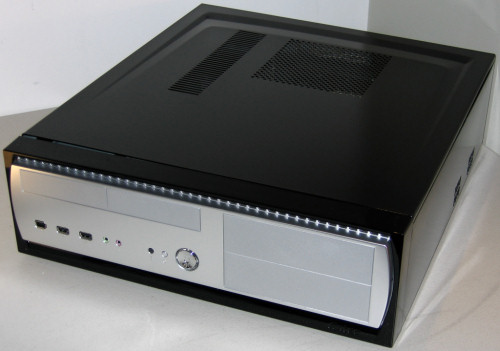
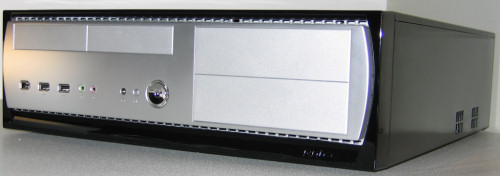
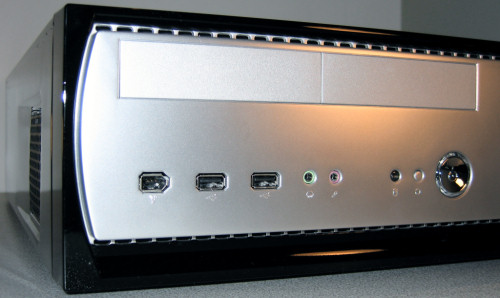

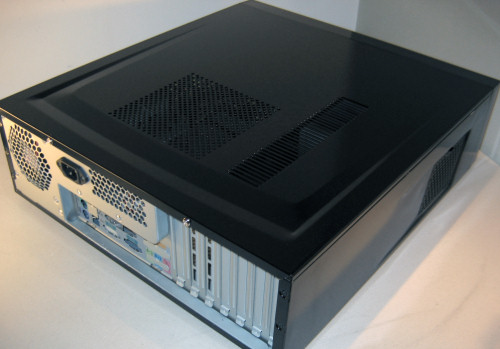









26 Comments
View All Comments
Tamale - Tuesday, November 22, 2005 - link
The 'POS' power supply happens to deliver steadier voltages to the highest-end gear I've gotten my hands on (and no, the P4 test bed isn't the most powerful thing I've tested it in) than anything else that's passed through my hands, and that includes over a dozen power supplies by high-end manufacturers. I'm no reviewer of power supplies yet, as we're still working on that, but I guarantee you that this is a fine unit, especially for the area of case reviews, because in quiet mode it does a fantastic job of staying silent enough to hear the case fans and still provides rock-solid voltages to a stressed-out system. It also gets warm when in quiet mode in the cases that don't ventilate the power supply well enough, which is another good measure of a case. Perhaps most important however is the modular nature of the unit, and even though I've tried other modular units none were as quiet as the MadDog.Secondly, the thermaltake golden orb II at full voltage is quieter than any of zalman's coolers at full voltage. While I understand that the zalman will probably get lower temperatures, It is absolutely essential that the CPU cooler in my test bed make as little noise as possible, and the golden orb II does just that.
The recurring theme in your post seems to me to be that you want 'the perfect HTPC', but the whole idea of a case review is to isolate everything but the case as much as possible, and sometimes hotter components do a better job of illustrating the deficiencies of units than the latest and greatest.
Trust me on this one, if we used the absolute best gear available the comparisons would be much muddier.
As for the subjective comment, my scale of 1-10 can be thought of as a scale of tolerance.. with 5 basically being the threshold... anything higher than that really is 'too loud for the given application' and anything lower than 4 is 'acceptable'. It's not meant to be a numerically accurate scale of any sort. I felt very comfortable with the final subject ratings I gave these cases, because the Tenor and PC-800B just barely passed my personal threshold test, and I believe most users will agree.
tayhimself - Tuesday, November 22, 2005 - link
I hope you realize other PSUs are likely quieter and more efficient than "Mad Dog". Sure the may be quiet to your ears, but thats too subjective to really mean anything. Sadly, you rate the modular nature as being an important issue when it is not. The PSU getting warm in quiet mode may be a sign of a PSU not getting enough airflow.And you say "its silent enough to hear case fans". While that can be true, the PSU and Tt golden orb noise signatures can drown out subtler differences between the cases in terms of noise of the case fans. This is almost obvious from your review as you dont perceive the difference of 9 dB to be significant. Its better to use quality quiet components so you can tell what the case is contributing to the noise spectrum. Since this is about making case buying decisions, the other factors are best isolated.
Avalon - Tuesday, November 22, 2005 - link
Get crackin'.mrgq912 - Tuesday, November 22, 2005 - link
to tired to read the article but first post.mrgq912 - Tuesday, November 22, 2005 - link
okay now that I have that out of my system. How come you guys never review stuff from alienware or voodoopc. Those guys make HTPC's aswell. I never every heard of the players in this review making HTPC's untill today. Well nice to know i have options.Would buy one if i could, untill then i will live with my ati tv wonder elite.
ksherman - Tuesday, November 22, 2005 - link
uh, cuz Alienware and Voodoo are over priced peices of DooDoo... and because this site is more geared around people that build their own machines...